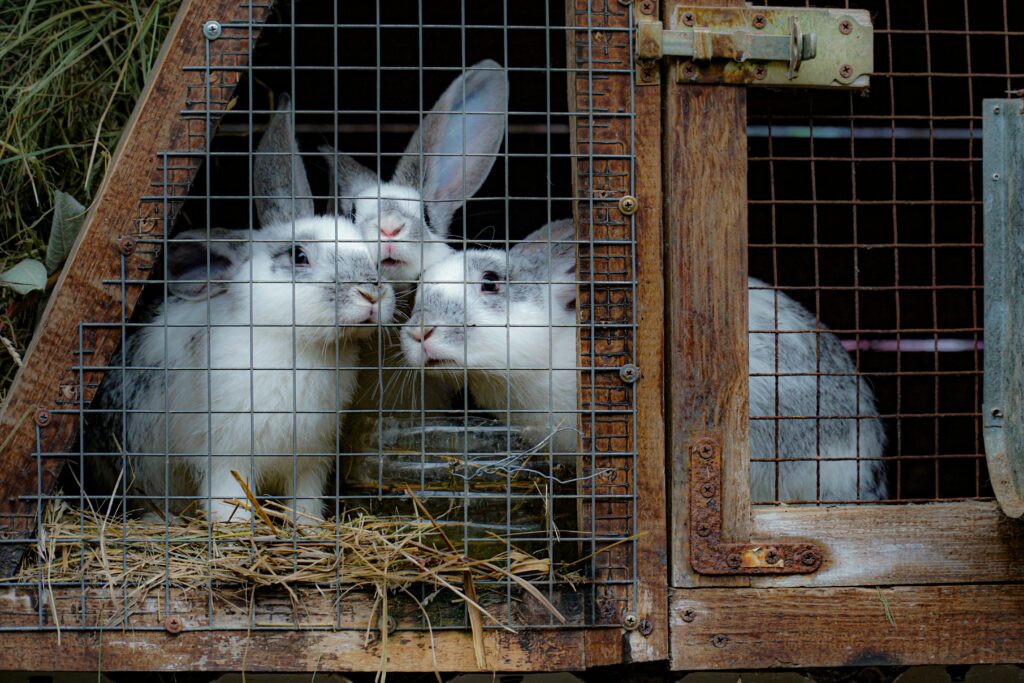Have you ever made mistakes in farming that caused significant losses, draining your inspiration, dreams, and focus? Farming, despite its age-old importance to human survival, remains a sensitive industry where skills are often acquired through hands-on experience, observation, and learning from others.
Join me as I share the tough lessons I learned while rearing rabbits as a young, unskilled, and inexperienced farmer.
Why Rabbit Rearing?
At 12 years old, I was eager to find a way to earn some income, and farming seemed like the most relatable path, given that it was our family business. To carve out my niche, I decided to try something new that hadn’t been explored on our farm: rabbit rearing. Through conversations with friends, I discovered that rabbit fur, meat, and even urine were seen as profitable commodities, thanks to a village organization promoting rabbit farming.
I made a solid decision by considering crucial factors such as market demand, breed availability, and the animal’s adaptability to the local climate.
How Did I Start?
The most challenging part was gathering resources to build a rabbit structure. At 12, this was no easy task, but I pulled through by saving money, selling some of my things, and borrowing from my siblings. Determined to be independent, I never asked for adult help. With building materials ready and friends offering manpower, we brainstormed a design and built the structure.
In hindsight, I recommend anyone embarking on such a venture to consult professionals for design advice rather than improvising.
Choosing the Right Breed
Despite my limited budget, I invested in two New Zealand White rabbits, known for their beautiful white fur, high meat yield, and fine bones. An adult rabbit of this breed typically weighs between 4.5 and 5.4 kg, making it ideal for my goal of selling rabbit meat. Their white fur also offers production versatility for fashionable clothing products and items. I planned to rent a male rabbit from a nearby farmer for breeding.
Researching the right breed for your goals is essential. Had my goal been to raise pets, for example, fur color or weight wouldn’t have mattered as much.

Daily Farm Work and Routine
I learned from other farmers about the types of vegetation that rabbits feed on. Fortunately, many of these plants grew as weeds on our maize farm, like blackjack (Bidens pilosa), Clover (Trifolium spp.), and Dandelion (Taraxacum officinale). However, managing my time was a challenge. With school assignments and attendance taking up most of my day, I could only dedicate evenings to gathering rabbit feed and lunchtime to checking on them, restocking food, and cleaning their space.
One critical lesson I missed was that spending quality time observing your animals is essential. Detecting signs of heat, illness, or behavioral changes early can prevent major issues. My failure to do this led to significant problems later on.
Breeding and Reproduction
When my rabbits reached the right age of 5-8 months for breeding, I failed at getting a buck (male rabbit) for breeding at the right time as I did not dictate the heat signs. A fellow rabbit farmer who visited unannounced noticed that my rabbits were ready for mating.
The experienced farmer informed me that they had been receptive for some time, and prolonged periods without breeding could lead to health and behavioral issues. He explained that if the female rabbit is not bred when she is receptive, it can lead to behavioral changes, frustration, or potential health risks like hormonal imbalances or uterine issues over time.
This experience taught me the importance of regular expert checks, especially since my heat detection skills were underdeveloped.
Health and Care
After the breeding process, I continued to rely on my farmer friend for advice. He confirmed the fertilization of my rabbits using palpation, a manual technique where he gently felt the doe’s abdomen to detect developing embryos after two weeks from the mating period and I returned the male rabbit.
I relied on my instincts and sprayed pesticides, similar to how I treated our family cat, but I hadn’t properly researched how to care for rabbits, especially regarding parasite and disease control. This lack of knowledge proved to be a serious mistake.
Effective parasite control, such as regular deworming and appropriate use of flea and mite treatments, along with vaccinations and proper sanitation, are essential for preventing illness in rabbits. Neglecting these critical health measures led to devastating consequences in my farming journey.
An Avoidable Loss
On the 33rd day after the mating sessions, I noticed a strange dandruff-like condition around one of my rabbit’s mouths, which I later learned was moist dermatitis. At first, I tried treating it myself by cleaning the affected area using a mild antiseptic solution as a traditional remedy, but the condition only worsened. The rabbits were in visible pain, struggling to feed, and stressed.
I had planned to hire a veterinarian, but it was too late. One morning, I found both rabbits lifeless in their structure. Had I sought professional advice from a veterinarian earlier, I could have prevented the disease through proper treatment and prevention.
Failed Income Generation
My dream of generating income from rabbit farming never materialized. The urine I had planned to collect for sale would have only been possible with a larger population of rabbits so I had not collected enough. In the end, I only produced compost manure, which helped in our kitchen garden.
Lesson Learnt
This heartbreaking experience taught me valuable lessons that I hope others can learn from. I failed to provide my rabbits with the care they needed, and it cost me dearly. If you are considering animal farming, please do thorough research, consult animal expert professionals, ensure you have the necessary resources, and, most importantly, dedicate time and passion to your venture.
Visit this Blog regularly for more farm stories, tips, and lessons from my experiences. Feel free to leave your comments and share what you’ve learned from this true story.
